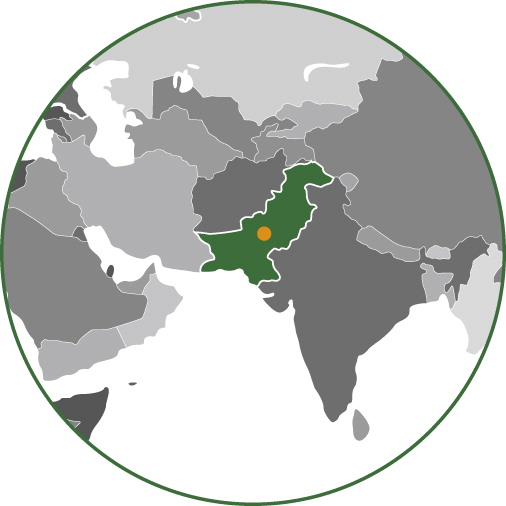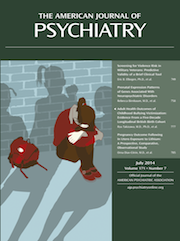“Ms. N,” a 27-year-old Muslim, Sindhi-speaking, married woman, born in a small village in Pakistan, the sixth of seven children, came to the city of Karachi after getting married 6 years ago. She is the second wife of a landlord and lives with him and their three children in a flat on the third floor of an old building. She arrived for her first appointment with a psychiatrist accompanied by her husband and their 3-year-old son. When the psychiatrist asked her the reason for her visit, she looked at her husband and said to him, in Sindhi, “You tell her.” The psychiatrist then addressed her in Sindhi (her own mother tongue), and the patient began to speak: “Doctor, I have become very sensitive. I start crying whenever I hear any bad news. I was not like this before.” She also complained of being unable to sleep, having no interest in anything, feeling as if there were no life in her body, and having difficulty in performing housework and looking after her children. She reported disturbing dreams in which she was surrounded by strange people and was anxiously searching for someone. She also complained of irritability, headaches, body aches, and feeling tired all the time. She had thought of seeing a spiritual healer (a murshid) in her village who had previously helped her, through prayers. During a previous episode of depression, she had been taken to see another spiritual healer (pir sahib), who told her that she was under the influence of the evil eye (nazar), and that her body needed to be purified. She had then gone to see him every Friday (the Islamic sabbath) with her family for various healing rituals, including recitation of Arabic verses from the Koran.
Being away from her village, when she recently became depressed, she visited a general practitioner, who prescribed an antidepressant, but she was reluctant to take it because she believed that it would be addictive. However, she continued to take the prescribed benzodiazepine, which helped her sleep but produced no other benefits, so her physician referred her to the psychiatrist.
Moving to Karachi from her village after marriage was an enormous cultural shock for her. She felt insecure in this new environment, where she frequently heard news of muggings, armed robberies, cellphone snatching, and killings. There was no one here she could share her feelings with. From her village home, with its open courtyard and plenty of fresh air, she had moved to a small flat in the city, surrounded by tall buildings, polluted air, and noisy traffic. She was not fluent in the language used by her neighbors, and women in the neighborhood made fun of her because she was simple and different. She felt humiliated by that but avoided telling her husband because he would just tell her that she did not know how to deal with people. Her self-esteem and confidence level had become very low. Over time, her language and social skills improved, but she made only one friend, and they socialized mostly with families from similar social backgrounds.
She was having a hard time coping with her fear about the lawlessness and sense of insecurity in the city, and because of this, she avoided watching the news on television, which her husband was very fond of. She recounted a recent incident, when, during a shopping trip, she witnessed the body of a shooting victim, draped in a white cloth, being put into an ambulance, while all around, people were going about their business as if nothing had happened. She could not get that image out of her mind for a long time, and she felt very disturbed by people’s insensitivity.
Ms. N’s mother had a stroke 2 years ago, but Ms. N could not stay in the village to take care of her. Then when her mother died, she could not travel to the village for her funeral because of security concerns. It took her a while to come to terms with it.
Ms. N’s parents had five daughters before her mother became pregnant with her. They desperately wanted a son and were bitterly disappointed when Ms. N was born. Her eldest sister told her that after Ms. N’s birth, their parents had quarreled and her mother had initially refused to breastfeed her, saying, “Let her die.” As she grew up, her mother paid very little attention to her. Her father, a schoolteacher, was a heavy cannabis user and never showed affection toward his wife or daughters. Initially, Ms. N thought that these behaviors were “normal,” but she felt confused when she saw both parents showering love and attention on her baby brother. Ms. N often pretended to be her brother, in order to get attention from her father.
Ms. N recalled that at one time, her mother had been experiencing the symptoms that she herself was now experiencing.
Ms. N used to have a few friends in the village, and her closest friend was a cousin. She had wanted to marry another cousin, but when he became betrothed to someone else, she was heartbroken and decided that she would resume her studies and enroll in college instead of getting married. However, her family refused to accept this, and her brother told her that she had only three honorable options: to marry a man chosen by her family, to discontinue her studies and stay at home, or to commit suicide. She chose the third option by cutting a vein on the back of her hand, but the cut was not deep and she survived. In the days that followed, she felt lonely, betrayed, rejected, and defeated. It was at that time that she was taken to a spiritual healer because her family was convinced that because of her beauty, someone had cast an evil eye (nazar) on her.
On examination, Ms. N appeared to be a young and attractive woman, well groomed and traditionally attired. She was pleasant and cooperative, and she provided clear and precise responses in a soft voice. She appeared sad and was tearful at times. There was no evidence of psychosis, obsessive-compulsive symptoms, or violent thoughts. She acknowledged that she did not want to live, but noted that she would not kill herself since suicide is considered to be a major sin in Islam, and also because her children were still very young and needed her care. She believed that her problems were a result of kismet, a dark fate (kismet is a Turkish word used commonly in Pakistan). Her cognitive functions were within normal limits.
Ms. N was diagnosed with major depressive disorder. Her psychiatrist prescribed sertraline, to be titrated to 50 mg/day over a 2-week period. The psychiatrist told her that sertraline is not addictive and that it corrects a chemical imbalance in depression. Initially, Ms. N contacted her psychiatrist frequently with complaints of side effects, but these decreased gradually and her depressive symptoms began improving. She was also referred for counseling, which she declined because she could not afford it. She was encouraged to start regular walks, but she never managed to get started on a walking program. She had considered seeing a spiritual healer again but was no longer sure it was the right thing to do. She did visit a shrine for prayers once during her treatment. She started attending a personal grooming course in her neighborhood, and made friends with several women there.
She came for her follow-up appointments rather reluctantly because she was afraid that if her in-laws found out about her psychiatric treatment, they would think of her as being “crazy.”
The improvement initially seen in her condition was maintained over the next few months.
Discussion
Ms. N met criteria for major depressive disorder of moderate severity. Predisposing factors included a family history of depression, adverse early experiences, including parental discord, gender discrimination, and emotional neglect. Her marriage against her wishes and then the move to Karachi and its accompanying problems were the most likely precipitating factors.
Prevailing insecurity in the city was an important perpetuating factor for her depression, as chronic terrorist attacks have a significant impact on mental health, often causing anxiety and depression. Women especially are concerned about the threat of terrorism, and they think more about terrorism than men do (
1).
In South Asian cultures, somatic symptoms are a common presenting complaint in depressed patients, especially women (
2), since physical illnesses are more culturally acceptable and more often given proper attention, as compared with psychiatric illnesses. Thus, patients with depression are usually seen initially by general practitioners, and the diagnosis is often missed. In Ms. N’s case, headaches and body aches were major complaints.
Some 70% of Pakistan’s population resides in rural areas, within an established feudal or tribal value system. Awareness about mental health is limited. Mental illnesses are usually stigmatized and are perceived to have supernatural causes (
3). Hence, the majority of patients seek help from traditional faith healers or religious leaders (
4).
Suicide is a condemned act in Islam (
5), and under Pakistani law (based on the tenets of Islam) both suicide and deliberate self-harm are illegal acts, punishable by imprisonment and fines (
6). Nevertheless, the number of suicides has been increasing in recent years. Most suicides occur in single men and married women under age 30. The most common methods used are hanging, insecticide, and firearm, and the most common reasons for suicide are interpersonal relationship problems and domestic issues (
7). Suicide in Pakistan is strongly associated with depression, which is underrecognized and undertreated (
8). In most cases, a psychiatric history is not available.
Paradoxically, in certain subcultures, suicide is considered to be an honorable act in specific situations. Women are seen as responsible for maintaining a family’s honor, and Ms. N was told by her brother to either follow the family’s wishes or commit suicide. In other words, a woman who disobeys her family’s wishes is essentially bringing dishonor to her family, and the only way to salvage that honor is to commit suicide. Women who are raped or are in a situation where they believe that rape is impending sometimes prefer to kill themselves rather than subject themselves and their families to this dishonor and shame.


